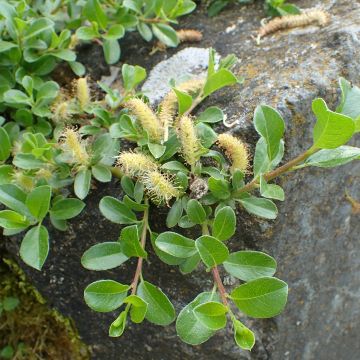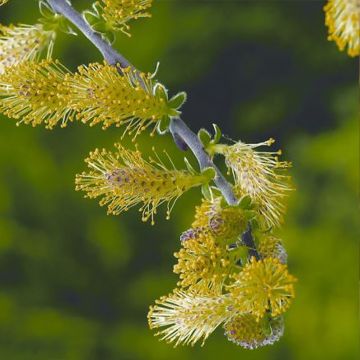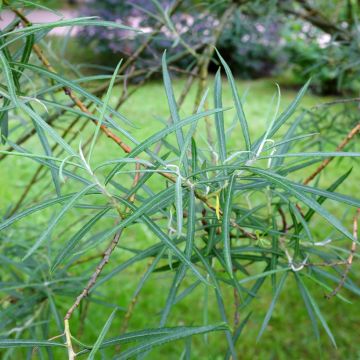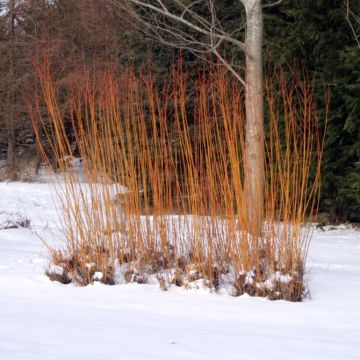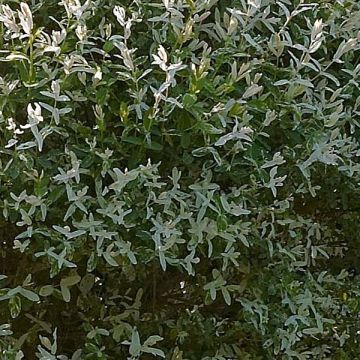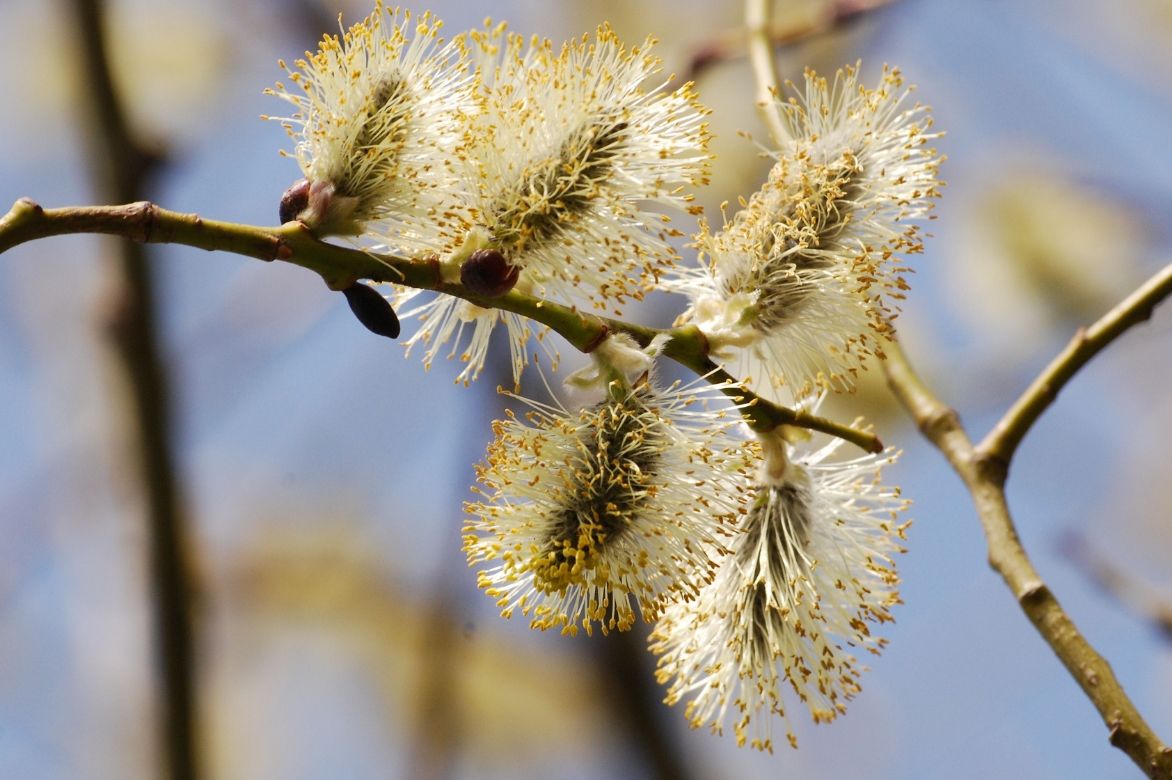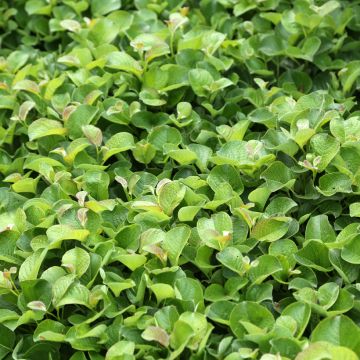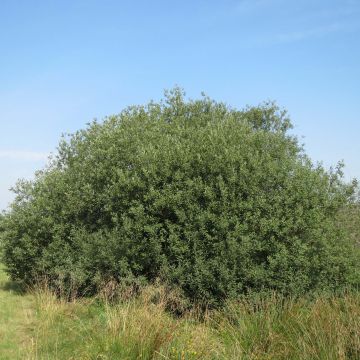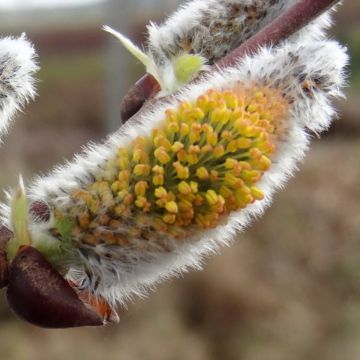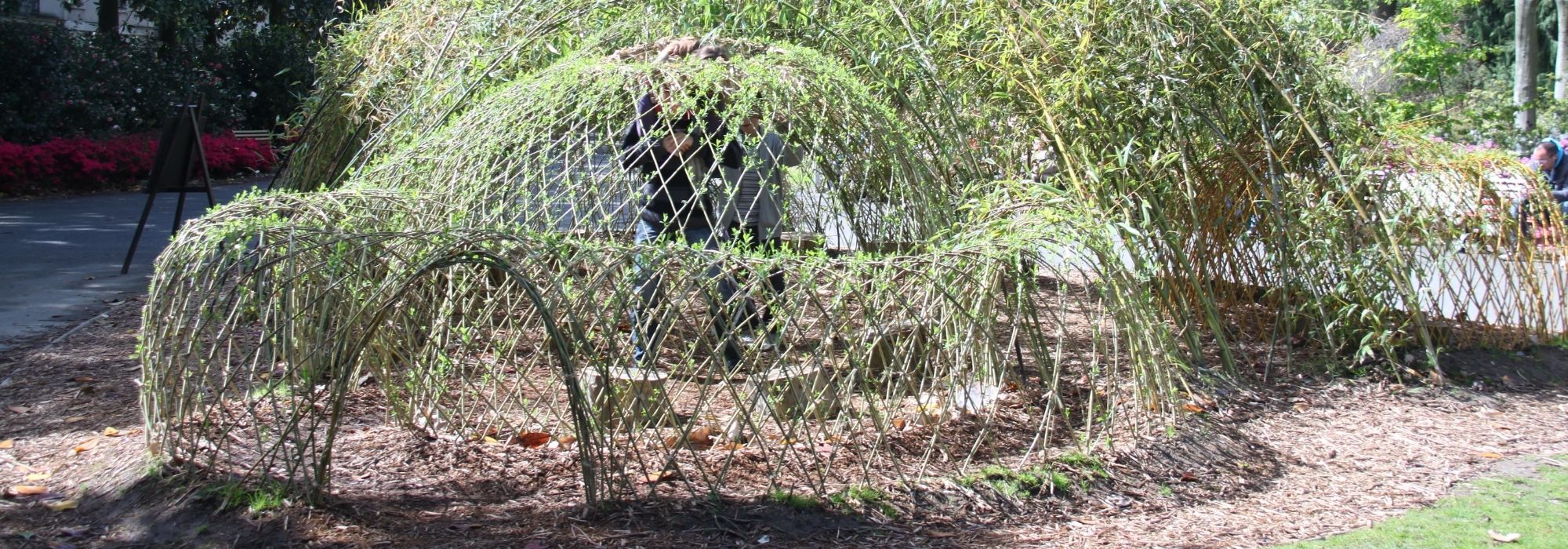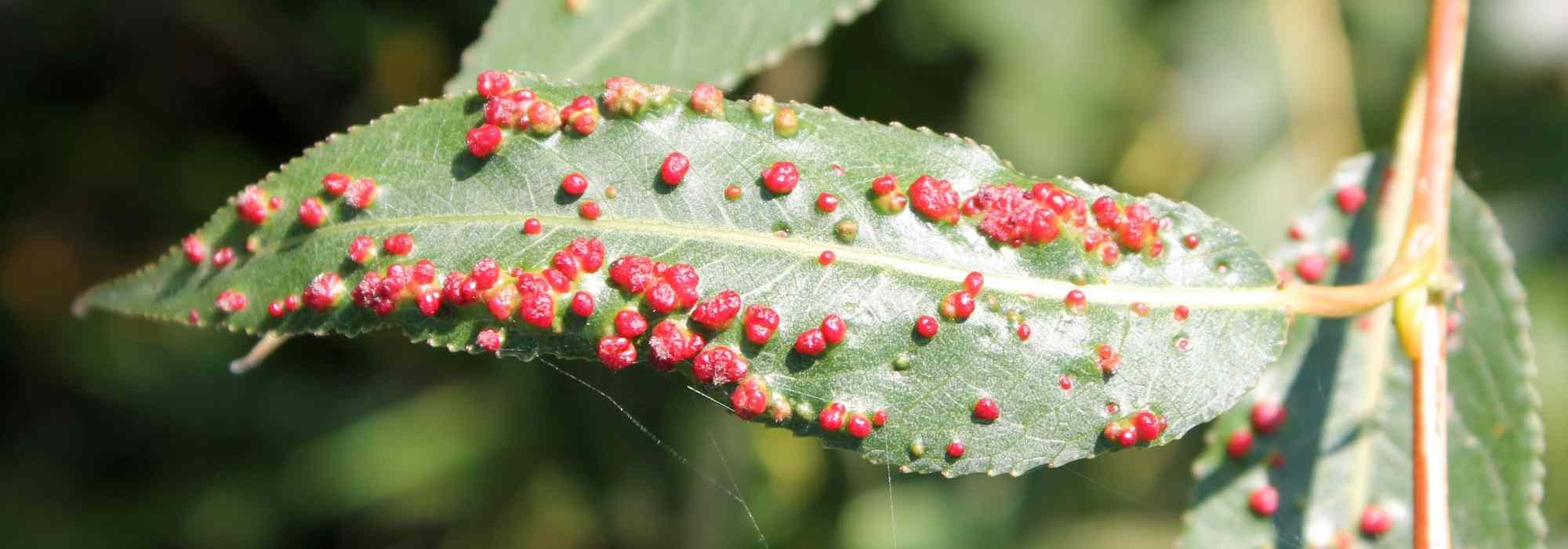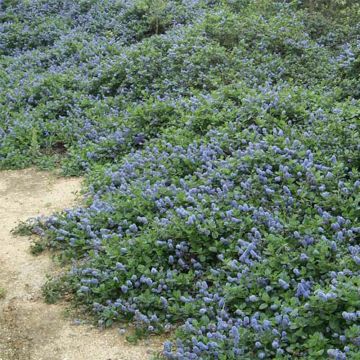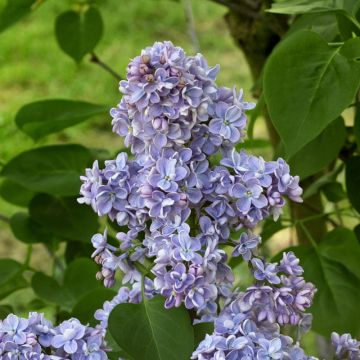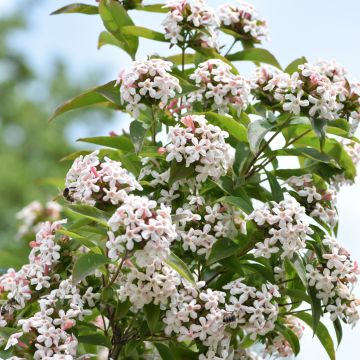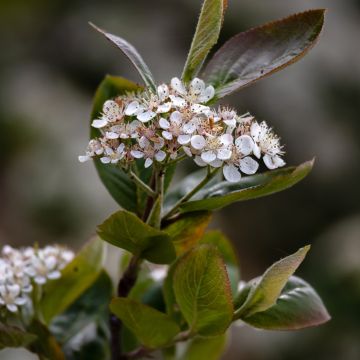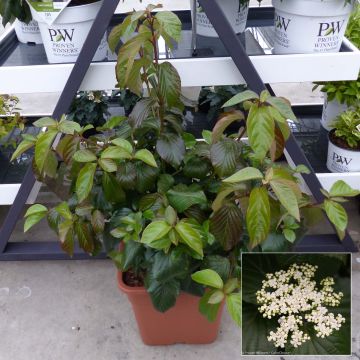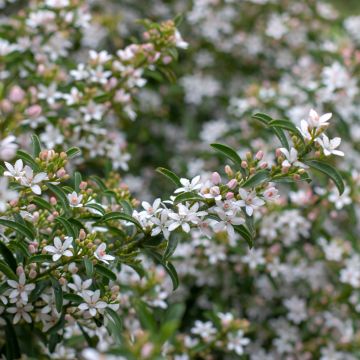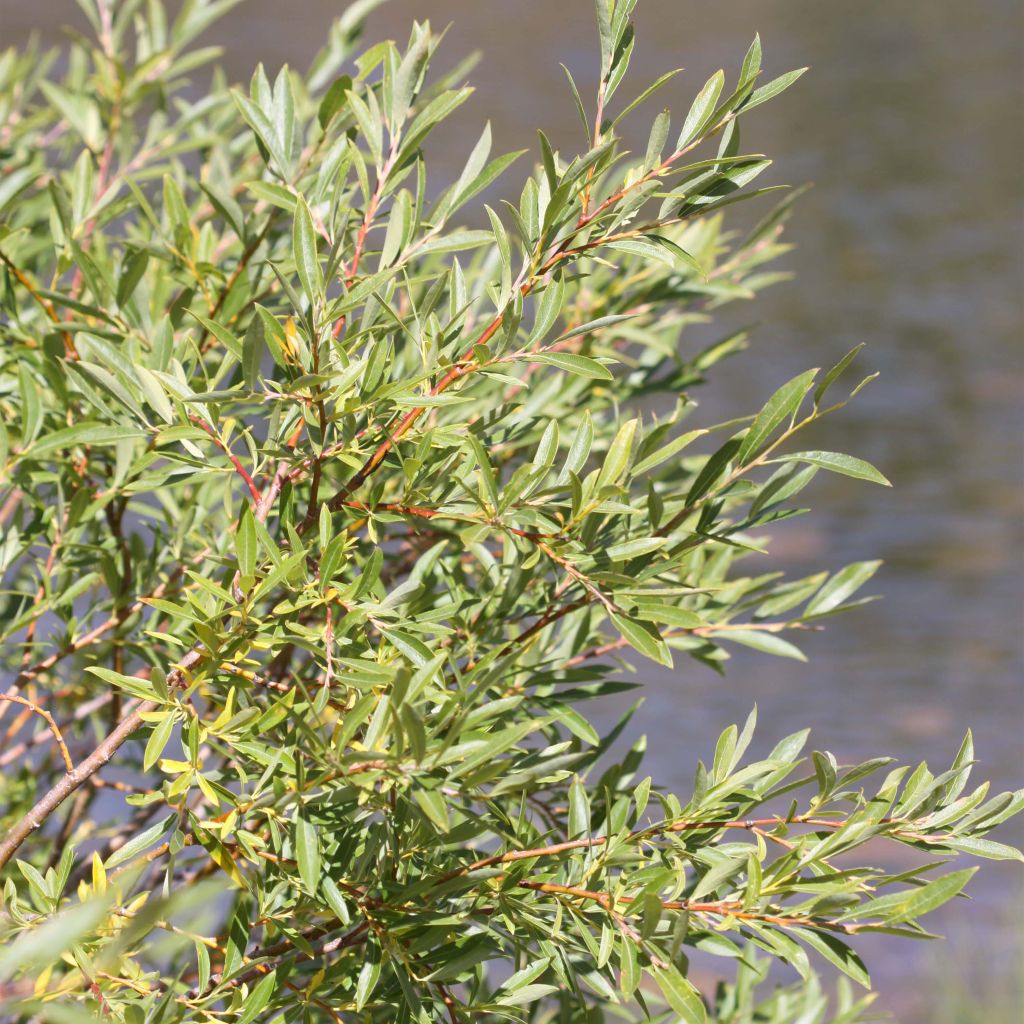

Salix exigua - Saule des coyottes
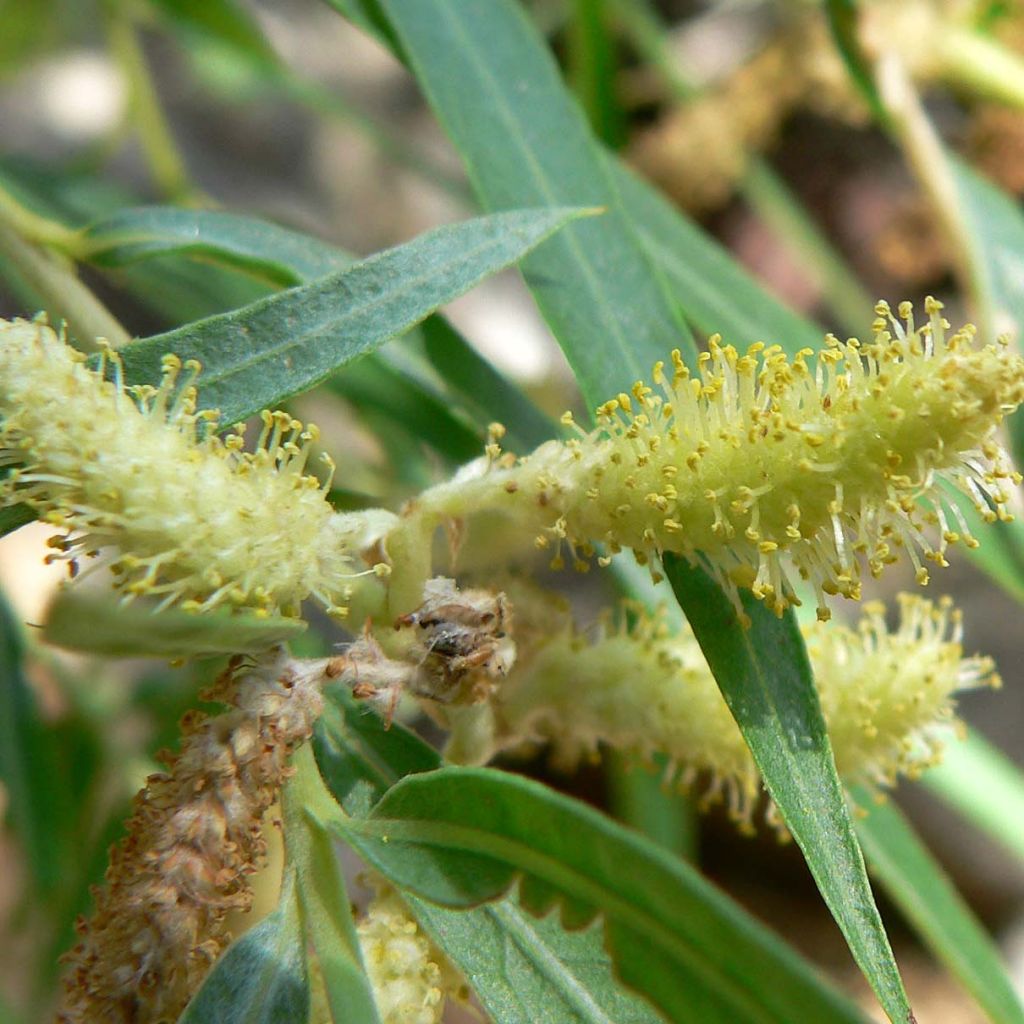

Salix exigua - Saule des coyottes
Salix exigua - Coyote Willow
Salix exigua
Coyote Willow, Narrowleaf Willow, Sandbar Willow
I quickly received my coyote willow. It has a beautiful height with two branches. Currently, the young plant is only growing on the upper half, but since it is healthy and has recovered very quickly, I am confident that it will eventually develop throughout its entire height. The foliage color is very attractive. I am pleased with this first purchase on the website and will therefore be ordering more.
Plantfolle, 13/07/2020
Special offer!
Receive a €20 voucher for any order over €90 (excluding delivery costs, credit notes, and plastic-free options)!
1- Add your favorite plants to your cart.
2- Once you have reached €90, confirm your order (you can even choose the delivery date!).
3- As soon as your order is shipped, you will receive an email containing your voucher code, valid for 3 months (90 days).
Your voucher is unique and can only be used once, for any order with a minimum value of €20, excluding delivery costs.
Can be combined with other current offers, non-divisible and non-refundable.
Why not try an alternative variety in stock?
View all →This plant carries a 24 months recovery warranty
More information
We guarantee the quality of our plants for a full growing cycle, and will replace at our expense any plant that fails to recover under normal climatic and planting conditions.
Would this plant suit my garden?
Set up your Plantfit profile →
Description
Salix exigua, the Coyote Willow or Coyote Bush, is undoubtedly one of the most beautiful deciduous shrubs with grey foliage. With an upright and slightly dishevelled crown formed by long, slender, and flexible branches that widen over time, it creates a light and silvery mass that plays with light and wind thanks to its long, fuzzy leaves. This wild species is not only one of the most elegant but also one of the most tolerant when it comes to soil, alongside the goat willow. It thrives equally well with its feet in the water by a body of water, as it does on a drier slope in summer, where it stabilises the soil.
Belonging to the willow family, Salix exigua is a deciduous botanical species native to the western part of North America, ranging from British Columbia in Canada to New Mexico in the United States. In its native habitat, this willow provides excellent cover for coyotes, hence its common name. It is a pioneering and ubiquitous species, a light-loving essence that is less exclusively associated with wetlands than most other species in the Salix genus. The coyote willow is a suckering shrub that tends to spread laterally over time. It has a characteristic habit, tall, slightly scruffy and irregular, supported by one or several trunk branches near the base. At maturity, this fast-growing willow will reach an average height of 4 metres with a 5-metre (16 feet) spread. The young branches are erect and have a reddish-brown colour. The foliage is deciduous, with slender, silky leaves measuring 10 cm (4in). The upper side of the leaves is grey-green, while the underside is bluish-grey and silvery. The inconspicuous flowering, partially hidden by the foliage, occurs in April-May on separate male and female individuals. The male catkins measure up to 10 cm in length, while the female catkins measure 8 cm (3in). The fruit is a capsule that opens to release seeds with long bristles.
Equally charming by a watercourse, in a mass planting, or in a country hedge, the coyote willow is highly resistant to severe frosts and very easy to grow in ordinary soil. Unlike most of its relatives, it does not require constantly moist or waterlogged soil throughout the year and can withstand periods of summer drought with occasional watering. In the United States, it is commonly used to stabilize riverbanks or slopes along watercourses. For example, it can be paired with the purple foliage of a smoke bush, hazel, or beech, and surrounded by Panicum, pampas grass, or Miscanthus for a scene that exudes lightness.
Salix exigua - Coyote Willow in pictures
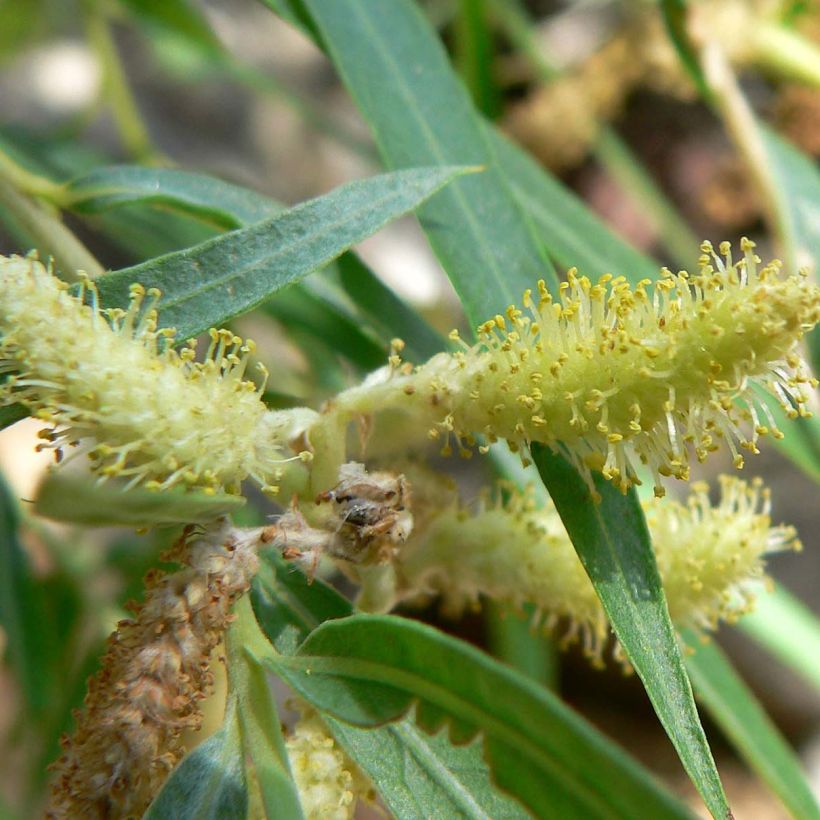

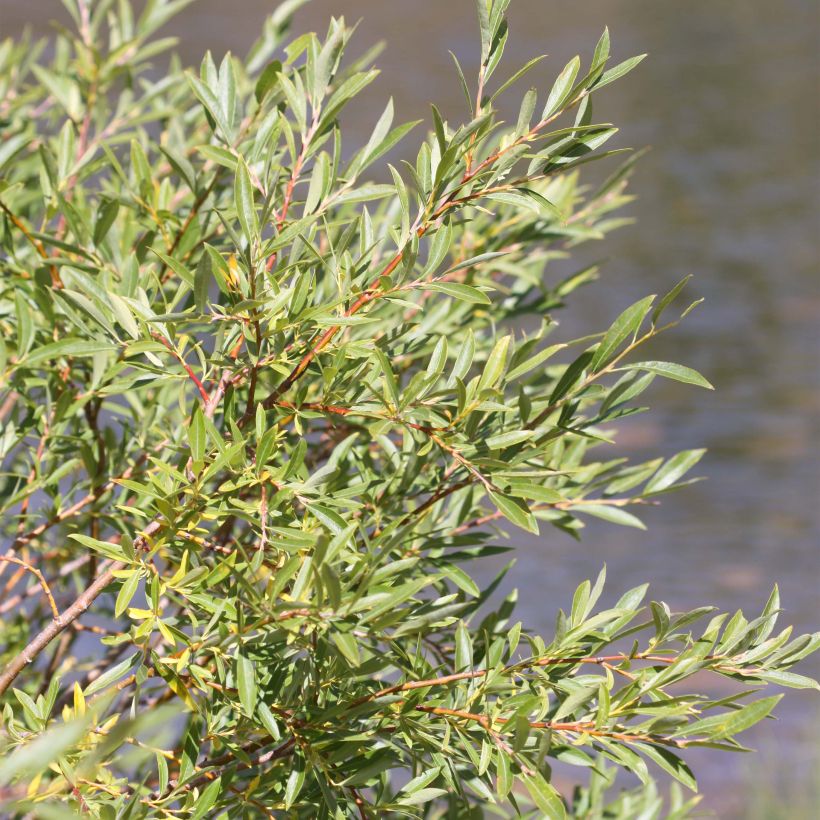

Plant habit
Flowering
Foliage
Botanical data
Salix
exigua
Salicaceae
Coyote Willow, Narrowleaf Willow, Sandbar Willow
North America
Other Willow - Salix
View all →Planting and care
Plant Salix exigua in full sun, preferably in autumn. It is undemanding in terms of soil as long as it has some depth to provide the bush with a bit of moisture in case of drought. It will adapt well to light, rocky and sandy soil as well as heavy and clayey, very moist soil. It tolerates the presence of limestone as well as sandy or slightly acidic soil. In all regions, follow the watering instructions for the first two years to help the bush establish itself. In hot regions, once the plant is established, watering every 15 days or 3 weeks will be sufficient. Ideally, use a mixture of half potting soil and half garden soil when planting. It is perfectly resistant to cold and severe frost. To promote a bushy habit and the formation of catkin-bearing branches, you can prune every 4 years or so. However, be careful as this may induce new shoots from the stump, and therefore a wider development.
Diseases and pests of willows:
The leaves and branches are susceptible to various fungal diseases. Collect all the leaves in autumn and burn them. Many insects such as aphids and caterpillars devour the foliage.
Planting period
Intended location
Care
Planting & care advice
-
, onOrder confirmed
Reply from on Promesse de fleurs
Similar products
Haven't found what you were looking for?
Hardiness is the lowest winter temperature a plant can endure without suffering serious damage or even dying. However, hardiness is affected by location (a sheltered area, such as a patio), protection (winter cover) and soil type (hardiness is improved by well-drained soil).

Photo Sharing Terms & Conditions
In order to encourage gardeners to interact and share their experiences, Promesse de fleurs offers various media enabling content to be uploaded onto its Site - in particular via the ‘Photo sharing’ module.
The User agrees to refrain from:
- Posting any content that is illegal, prejudicial, insulting, racist, inciteful to hatred, revisionist, contrary to public decency, that infringes on privacy or on the privacy rights of third parties, in particular the publicity rights of persons and goods, intellectual property rights, or the right to privacy.
- Submitting content on behalf of a third party;
- Impersonate the identity of a third party and/or publish any personal information about a third party;
In general, the User undertakes to refrain from any unethical behaviour.
All Content (in particular text, comments, files, images, photos, videos, creative works, etc.), which may be subject to property or intellectual property rights, image or other private rights, shall remain the property of the User, subject to the limited rights granted by the terms of the licence granted by Promesse de fleurs as stated below. Users are at liberty to publish or not to publish such Content on the Site, notably via the ‘Photo Sharing’ facility, and accept that this Content shall be made public and freely accessible, notably on the Internet.
Users further acknowledge, undertake to have ,and guarantee that they hold all necessary rights and permissions to publish such material on the Site, in particular with regard to the legislation in force pertaining to any privacy, property, intellectual property, image, or contractual rights, or rights of any other nature. By publishing such Content on the Site, Users acknowledge accepting full liability as publishers of the Content within the meaning of the law, and grant Promesse de fleurs, free of charge, an inclusive, worldwide licence for the said Content for the entire duration of its publication, including all reproduction, representation, up/downloading, displaying, performing, transmission, and storage rights.
Users also grant permission for their name to be linked to the Content and accept that this link may not always be made available.
By engaging in posting material, Users consent to their Content becoming automatically accessible on the Internet, in particular on other sites and/or blogs and/or web pages of the Promesse de fleurs site, including in particular social pages and the Promesse de fleurs catalogue.
Users may secure the removal of entrusted content free of charge by issuing a simple request via our contact form.
The flowering period indicated on our website applies to countries and regions located in USDA zone 8 (France, the United Kingdom, Ireland, the Netherlands, etc.)
It will vary according to where you live:
- In zones 9 to 10 (Italy, Spain, Greece, etc.), flowering will occur about 2 to 4 weeks earlier.
- In zones 6 to 7 (Germany, Poland, Slovenia, and lower mountainous regions), flowering will be delayed by 2 to 3 weeks.
- In zone 5 (Central Europe, Scandinavia), blooming will be delayed by 3 to 5 weeks.
In temperate climates, pruning of spring-flowering shrubs (forsythia, spireas, etc.) should be done just after flowering.
Pruning of summer-flowering shrubs (Indian Lilac, Perovskia, etc.) can be done in winter or spring.
In cold regions as well as with frost-sensitive plants, avoid pruning too early when severe frosts may still occur.
The planting period indicated on our website applies to countries and regions located in USDA zone 8 (France, United Kingdom, Ireland, Netherlands).
It will vary according to where you live:
- In Mediterranean zones (Marseille, Madrid, Milan, etc.), autumn and winter are the best planting periods.
- In continental zones (Strasbourg, Munich, Vienna, etc.), delay planting by 2 to 3 weeks in spring and bring it forward by 2 to 4 weeks in autumn.
- In mountainous regions (the Alps, Pyrenees, Carpathians, etc.), it is best to plant in late spring (May-June) or late summer (August-September).
The harvesting period indicated on our website applies to countries and regions in USDA zone 8 (France, England, Ireland, the Netherlands).
In colder areas (Scandinavia, Poland, Austria...) fruit and vegetable harvests are likely to be delayed by 3-4 weeks.
In warmer areas (Italy, Spain, Greece, etc.), harvesting will probably take place earlier, depending on weather conditions.
The sowing periods indicated on our website apply to countries and regions within USDA Zone 8 (France, UK, Ireland, Netherlands).
In colder areas (Scandinavia, Poland, Austria...), delay any outdoor sowing by 3-4 weeks, or sow under glass.
In warmer climes (Italy, Spain, Greece, etc.), bring outdoor sowing forward by a few weeks.






























